Review: Norco Range VLT - The Purple Plow
The Range VLT is the longest travel option in Norco's e-bike lineup, and falls into what I'd call the 'shuttle truck replacement' category. With DH-oriented geometry, 170mm of rear travel, and Bosch's Performance CX motor powered by a 750 WH battery, the Range is designed to get riders to the top of rowdy descents as quickly as possible.
There are three models in the lineup, with prices starting at $6,999 USD for the aluminum-framed Range VLT A1, and going up to $8,999 for the VLT C1 that's reviewed here. Component highlights include a 180mm RockShox Zeb Ultimate fork, Vivid Select+ shock, GX AXS T-Type wireless drivetrain, and Code RSC brakes.
There are three models in the lineup, with prices starting at $6,999 USD for the aluminum-framed Range VLT A1, and going up to $8,999 for the VLT C1 that's reviewed here. Component highlights include a 180mm RockShox Zeb Ultimate fork, Vivid Select+ shock, GX AXS T-Type wireless drivetrain, and Code RSC brakes.
Norco Range VLT C1 Details
• Wheel size: 29" front / 27.5" rear
• Carbon front triangle, aluminum swingarm
• Travel: 170mm / 180mm fork
• 63º head angle
• 77º seat tube angle
• 436mm chainstays (size 3)
• Weight: 57.8 lb / 26.2 kg (size 3)
• Price: $8,999 USD
• norco.com
• Wheel size: 29" front / 27.5" rear
• Carbon front triangle, aluminum swingarm
• Travel: 170mm / 180mm fork
• 63º head angle
• 77º seat tube angle
• 436mm chainstays (size 3)
• Weight: 57.8 lb / 26.2 kg (size 3)
• Price: $8,999 USD
• norco.com
Frame & Motor Details
The Range uses a stout looking carbon fiber front triangle and an aluminum swingarm, with the battery and mode indicator for the Bosch motor incorporated into the top tube. The layout leaves room for a water bottle inside the front triangle, and the straight seat tube makes it possible to run long travel dropper posts.
There's no silly thru-headset cable routing to be seen here; the housing runs through ports on each side of the head tube. The battery can be removed without too much hassle – it slides out through the bottom of the downtube, a design that I prefer over dealing with rattly side or downtube panels.
Chainslap protection is located on the seat and chainstays, and there's also a downtube guard to prevent any damage if the bike's loaded in the back of a pickup truck.
The Bosch Performance CX motor is controlled by the wireless remote located on the left side of the handlebar. If the remote battery died or if it was damaged in a crash there are buttons on the top tube display that can be used to switch through the four different modes. Those modes can be customized in Bosch's Flow app, and it's now possible to swap one mode out for another from Bosch's catalog of options.
The Range uses a stout looking carbon fiber front triangle and an aluminum swingarm, with the battery and mode indicator for the Bosch motor incorporated into the top tube. The layout leaves room for a water bottle inside the front triangle, and the straight seat tube makes it possible to run long travel dropper posts.
There's no silly thru-headset cable routing to be seen here; the housing runs through ports on each side of the head tube. The battery can be removed without too much hassle – it slides out through the bottom of the downtube, a design that I prefer over dealing with rattly side or downtube panels.
Chainslap protection is located on the seat and chainstays, and there's also a downtube guard to prevent any damage if the bike's loaded in the back of a pickup truck.
The Bosch Performance CX motor is controlled by the wireless remote located on the left side of the handlebar. If the remote battery died or if it was damaged in a crash there are buttons on the top tube display that can be used to switch through the four different modes. Those modes can be customized in Bosch's Flow app, and it's now possible to swap one mode out for another from Bosch's catalog of options.
Geometry
There are five sizes in the Range VLT lineup, with reach numbers starting at 417mm and going up in 25mm increments, maxing out at 517mm for the size 5.
The split between size 3 and 4 may leave some riders scratching their heads about what size to buy. Over the last few years many companies seem to have settled on 475 – 485mm reach for a size large, but with the Norco's sizing, riders will be deciding between the 467mm reach of the size 3, or the 492mm reach of the size 4.
The head angle is a slack 63-degrees across the board, and all sizes roll on a mixed wheel setup.
The rear center length increases in 4mm increments, starting at 428mm for the size 1 and going up to 444 on a size 5. Don't forget, the bike's rearward axle path will increase those numbers further as the bike goes through its travel; add 8 millimeters to each figure to determine the chainstay length at sag.
Suspension Design
The Range and Sight VLT use Norco's VPS HP suspension layout (or Virtual Pivot Suspension High Pivot, which sort of looks like word salad). The idler is mounted on the chainstay, above and slightly behind the chainring, a positioning that's covered under a patent that Norco licenses from i-track. That layout gives a rearward axle path for the first two-thirds of the bike's travel, which equates to the chainstay length growing by a total of 15 millimeters.
The anti-squat levels are slightly lower than what's found on the non-motorized Sight and Optic, since outright efficiency isn't quite as high of a priority when there's a motor in the mix - the focus can be shifted to creating more grip on steep, loose climbs.
The Range and Sight VLT use Norco's VPS HP suspension layout (or Virtual Pivot Suspension High Pivot, which sort of looks like word salad). The idler is mounted on the chainstay, above and slightly behind the chainring, a positioning that's covered under a patent that Norco licenses from i-track. That layout gives a rearward axle path for the first two-thirds of the bike's travel, which equates to the chainstay length growing by a total of 15 millimeters.
The anti-squat levels are slightly lower than what's found on the non-motorized Sight and Optic, since outright efficiency isn't quite as high of a priority when there's a motor in the mix - the focus can be shifted to creating more grip on steep, loose climbs.
| Specifications | ||
| Price | $8999 | |
| Travel | 170mm | |
| Rear Shock | RockShox Vivid Select+ 230 x 65mm | |
| Fork | RockShox Zeb Ultimate 180mm | |
| Headset | FSA No. 55 Sealed Bearing | |
| Cassette | SRAM 1275 T-Type 10-52 tooth | |
| Crankarms | e*thirteen e*Plus 165mm | |
| Pedals | Bosch Performance Line CX / 750 Wh battery | |
| Rear Derailleur | SRAM GX AXS T-Type | |
| Chain | SRAM GX Eagle T-Type | |
| Shifter Pods | SRAM AXS Pod controller | |
| Handlebar | 6061 alloy, 800mm wide, 25mm rise | |
| Stem | 40mm, 35mm clamp | |
| Grips | WTB Wavelength | |
| Brakes | SRAM Code RSC | |
| Wheelset | Crankbrothers Synthesis E-Bike | |
| Tires | Continental Kryptotal-F Enduro 29 x 2.4 / Continental Kryptotal Enduro 27.5 x 2.4" | |
| Seat | SDG Bel Air V3 Lux Alloy | |
| Seatpost | TranzX YSI08FL RAD+ Travel Adjust Dropper | |
Test Bike Setup
At 5'11” / 180cm I fall almost exactly on the split between a size 3 or 4, at least according to Norco's size chart. I ended up going with a size 3, which has a reach of 467.5mm. Given the slack head angle, extra weight, and rearward axle path, it made more sense to go with the smaller rather than larger size, since I didn't want to feel like I was a passenger getting dragged along for the ride.
I ended up installing a 50mm stem instead of the 40mm stem I use on most enduro bikes these days, which helped ensure I didn't feel to cramped while climbing and had adequeate weight over the front wheel. I also swapped the 170mm post for one with 200mm of drop, since the vast majority of trails I planned on riding this purple beast on were steep and steeper.
We've praised Norco's Ride Aligned online suspension setup guide before, and those accolades still hold true – it makes it quick and easy to find a good starting place, and I didn't deviate by more than a click or two from the suggesting fork and shock settings.
At 5'11” / 180cm I fall almost exactly on the split between a size 3 or 4, at least according to Norco's size chart. I ended up going with a size 3, which has a reach of 467.5mm. Given the slack head angle, extra weight, and rearward axle path, it made more sense to go with the smaller rather than larger size, since I didn't want to feel like I was a passenger getting dragged along for the ride.
I ended up installing a 50mm stem instead of the 40mm stem I use on most enduro bikes these days, which helped ensure I didn't feel to cramped while climbing and had adequeate weight over the front wheel. I also swapped the 170mm post for one with 200mm of drop, since the vast majority of trails I planned on riding this purple beast on were steep and steeper.
We've praised Norco's Ride Aligned online suspension setup guide before, and those accolades still hold true – it makes it quick and easy to find a good starting place, and I didn't deviate by more than a click or two from the suggesting fork and shock settings.
Mike Kazimer
Location: Bellingham, WA, USA
Height: 5'11" / 180cm
Inseam: 33" / 84cm
Weight: 160 lbs / 72.6 kg
Industry affiliations / sponsors: None
Instagram: @mikekazimer
Location: Bellingham, WA, USA
Height: 5'11" / 180cm
Inseam: 33" / 84cm
Weight: 160 lbs / 72.6 kg
Industry affiliations / sponsors: None
Instagram: @mikekazimer
Testing Info
Testing took place in Bellingham, Washington, over the last few months, with conditions ranging from wet and dreary to sunny and perfect - typical springtime weather in the Pacific Northwest.
Climbing
With a 750 Wh battery (part of the reason it weighs so much) and Bosch's powerful Performance CX motor, the Range VLT is well equipped for knocking out long climbs in a short amount of time. On multiple occasions I was able to get over 6,000 vertical feet of climbing on one charge, and that was with a healthy use of Turbo mode. Tour+ saw plenty of use too – in that mode the motor automatically adjusts its output depending on if you're spinning on flat ground or grinding up a steeper grade, which noticeably increases the range.
The Range's weight wasn't too noticeable while climbing, at least until I had to get off and lug it over a downed tree, but you can feel the overall mass when working through slower speed, more technical climbs. The slack head angle comes into play too – there's plenty of stability, and the Range is great at clambering its way up rough, chunky climbs, but it's not the zippiest, easiest to maneuver thing. The suspension does a good job of balancing traction and support, keeping the rear wheel stuck to the ground without making the rider feel like they're bouncing around on an old waterbed.
It wouldn't be a high pivot review without a couple sentences mentioning the idler, but this time around there's really no noise or noticeable drag to talk about – the whir of the motor masks any idler pulley noise, and erases any noticeable drag.
With a 750 Wh battery (part of the reason it weighs so much) and Bosch's powerful Performance CX motor, the Range VLT is well equipped for knocking out long climbs in a short amount of time. On multiple occasions I was able to get over 6,000 vertical feet of climbing on one charge, and that was with a healthy use of Turbo mode. Tour+ saw plenty of use too – in that mode the motor automatically adjusts its output depending on if you're spinning on flat ground or grinding up a steeper grade, which noticeably increases the range.
The Range's weight wasn't too noticeable while climbing, at least until I had to get off and lug it over a downed tree, but you can feel the overall mass when working through slower speed, more technical climbs. The slack head angle comes into play too – there's plenty of stability, and the Range is great at clambering its way up rough, chunky climbs, but it's not the zippiest, easiest to maneuver thing. The suspension does a good job of balancing traction and support, keeping the rear wheel stuck to the ground without making the rider feel like they're bouncing around on an old waterbed.
It wouldn't be a high pivot review without a couple sentences mentioning the idler, but this time around there's really no noise or noticeable drag to talk about – the whir of the motor masks any idler pulley noise, and erases any noticeable drag.
Descending
The Range VLT truly is a downhiller's e-bike, and its happy place is blasting down steep trails, plowing over whatever gets in its way. It does an impressive job of knocking the edge off of square edge hits, and there wasn't any sense of the rear wheel getting hung up. I did find that the high pivot suspension layout didn't feel as, well, high-pivoty, as I'd anticipated. All the same, the Range maintains its composure remarkably well when faced with chopped up section of trail.
This is a bike that rewards a more confident rider – sitting back and hanging on isn't going to have the best results. That said, the Range VLT's geometry gives it a level of quickness you might not expect, all other factors considered. Even with the rearward axle path the chainstays aren't that long, which can make it easier to rip around tighter turns, or pop off the lip of a jump. The suspension feels like it goes through its travel at exactly the right rate – there's no wallowing or unwanted mushiness on smoother sections, and then there's very controlled impact absorption from larger drops or rougher bits of trail.
The weight of the motor and battery helps keep the Range VLT planted when ripping through high speed turns, although the bottom bracket height is on the higher side, with just 2mm of drop from the BB to the rear axle. It's a similar sensation to what I experienced on the Commencal Meta Power – cornering is aided by the extra weight from the motor, but there's not that totally locked in, carvy feeling that can come with a lower bottom bracket. The Nukeproof Megawatt (RIP) and Specialized Turbo Levo are two examples of bikes with relatively low bottom brackets that corner exceptionally well.
While an extra pound (or three) doesn't really matter as much as it would on an eMTB compared to a non-motorized bike, when the weight starts creeping towards the 60-lb mark it is noticeable. One of the reasons I enjoyed Orbea's Wild eMTB last season was that it came in under 50 pounds with a full power motor. Granted, that bike did have a smaller battery, but with more and more range extenders hitting the market I think that a slightly smaller battery (600 Wh or so) with the option to stick on a 250 Wh battery for longer rides is the way to go on these bigger full power machines.
How Does It Compare?
I recently reviewed the Commencal Meta Power, which has the same motor as the Range, so a comparison seems fitting. Starting with the basics, the Commencal takes the win in the price department thanks to its aluminum frame and the Andorran company's consumer direct model.
The Meta Power has more of an all-round feel to it – it has a little less travel, and slightly sharper handling (depending on the setting, the head angle is either .6 or 1-degree steeper than the Range VLT). It has a more direct suspension feel, and doesn't smooth out the big hits to the same extent that the Range does. Speaking of range, the Meta Power has a smaller battery 625 Wh, although there is a 250 Wh range extender available. For pure downhill performance, the Range has the edge - it has a more DH-focused feel, and does a better job at handling steep, rough descents.
Which Model is the Best Value?
There are just three models of the Range VLT, and none really qualify as screaming deals. The C2 model is $1,000 less, and it still has a solid parts kit, with a cable-actuated SRAM GX drivetrain, Select+ level suspension components, and SRAM's mineral oil powered, 4-piston DB8 brakes. The A1 base model has a NX drivetrain, which isn't known for its longevity on non-motorized bikes – add a motor into the equation and it's not something I'd recommend. That model also has an aluminum frame, which is going to push the already-substantial weight even higher.
There are just three models of the Range VLT, and none really qualify as screaming deals. The C2 model is $1,000 less, and it still has a solid parts kit, with a cable-actuated SRAM GX drivetrain, Select+ level suspension components, and SRAM's mineral oil powered, 4-piston DB8 brakes. The A1 base model has a NX drivetrain, which isn't known for its longevity on non-motorized bikes – add a motor into the equation and it's not something I'd recommend. That model also has an aluminum frame, which is going to push the already-substantial weight even higher.
Technical Report
SRAM GX Transmission: The GX derailleur worked well for the entire test period, firing off consistent shifting no matter how much I was mashing on the pedals. I do wish the Norco had used an auxiliary power cord to wire the derailleur into the main battery. I don't really like charging batteries as it is, so I'd rather only need to remember to charge one battery instead of two.
Continental Kryptotal Enduro tires: The enduro casing of Continental's Kryptotal tires is tough enough for eMTB usage, although I'm still waiting for that long-rumored combination of an enduro casing with the Super Soft rubber compound. The Soft compound is fine in drier conditions, but when things are wet and slimy the Super Soft rubber that's currently only available on the DH casing tires is the way to go.
Headset noises: The Range developed a creaky headset a couple times during the test period, which was fixed each time by cleaning and greasing the cups and bearings. I rode in some pretty miserable conditions, so this isn't entirely unexpected, but it did seem to happen faster than I would have expected.
SRAM GX Transmission: The GX derailleur worked well for the entire test period, firing off consistent shifting no matter how much I was mashing on the pedals. I do wish the Norco had used an auxiliary power cord to wire the derailleur into the main battery. I don't really like charging batteries as it is, so I'd rather only need to remember to charge one battery instead of two.
Continental Kryptotal Enduro tires: The enduro casing of Continental's Kryptotal tires is tough enough for eMTB usage, although I'm still waiting for that long-rumored combination of an enduro casing with the Super Soft rubber compound. The Soft compound is fine in drier conditions, but when things are wet and slimy the Super Soft rubber that's currently only available on the DH casing tires is the way to go.
Headset noises: The Range developed a creaky headset a couple times during the test period, which was fixed each time by cleaning and greasing the cups and bearings. I rode in some pretty miserable conditions, so this isn't entirely unexpected, but it did seem to happen faster than I would have expected.
Pros
+ Great downhill performance
+ Big battery allows for big rides
+ Quicker handling than the geometry would suggest
Cons
- Split between sizes may make sizing tricky for some riders
- Heavy, even for a full power eMTB
Author Info:
Must Read This Week
Sign Up for the Pinkbike Newsletter - All the Biggest, Most Interesting Stories in your Inbox
PB Newsletter Signup
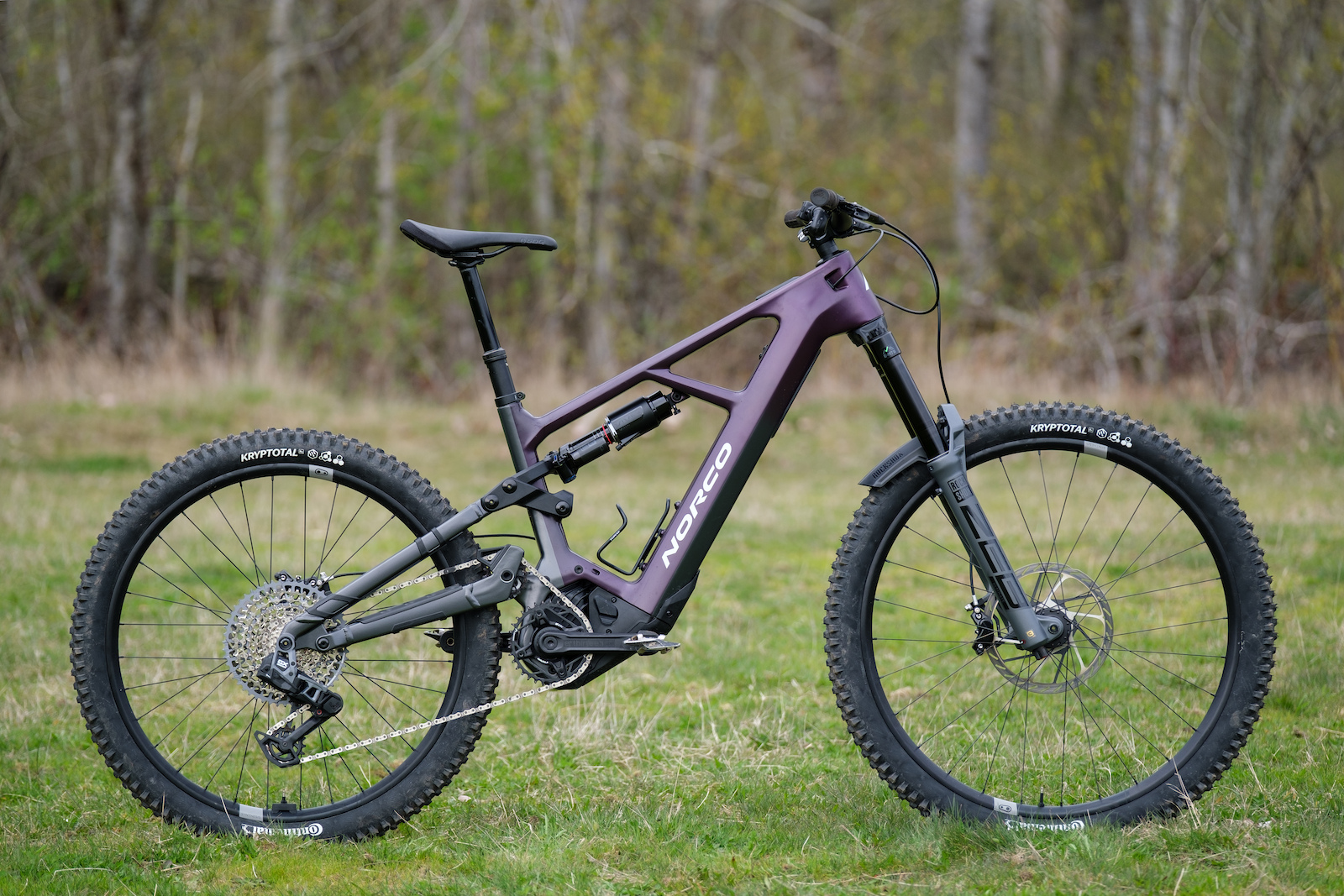
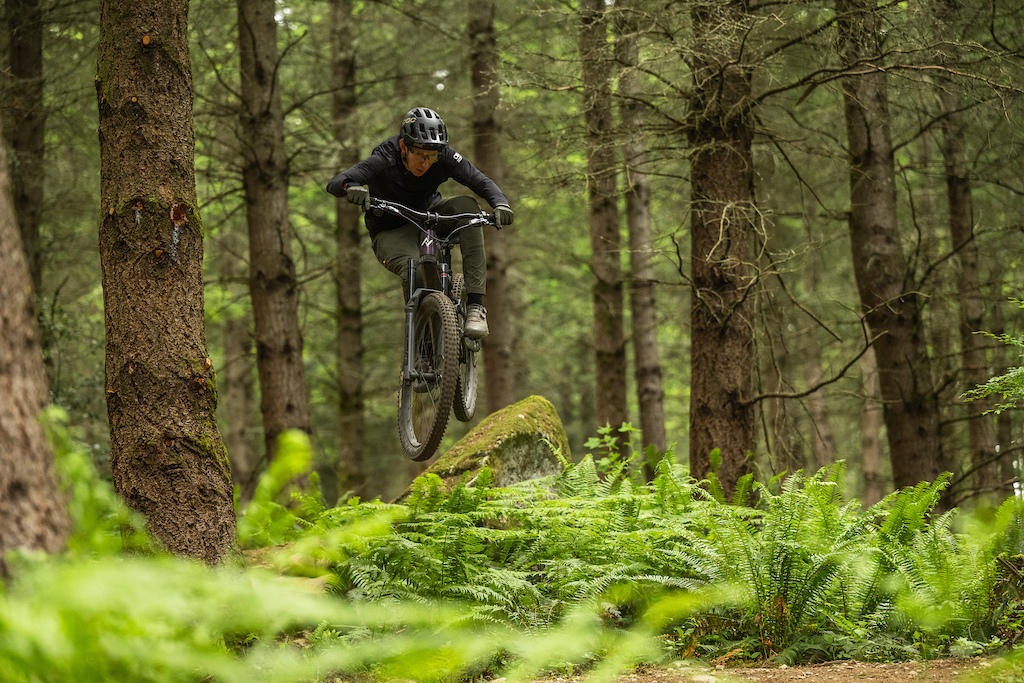
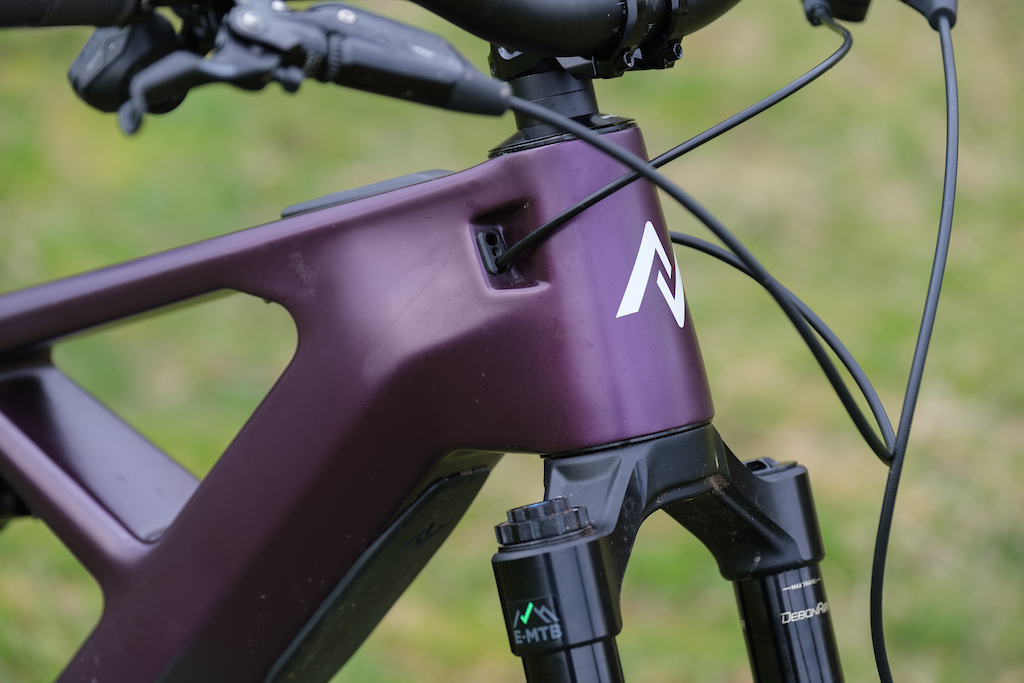
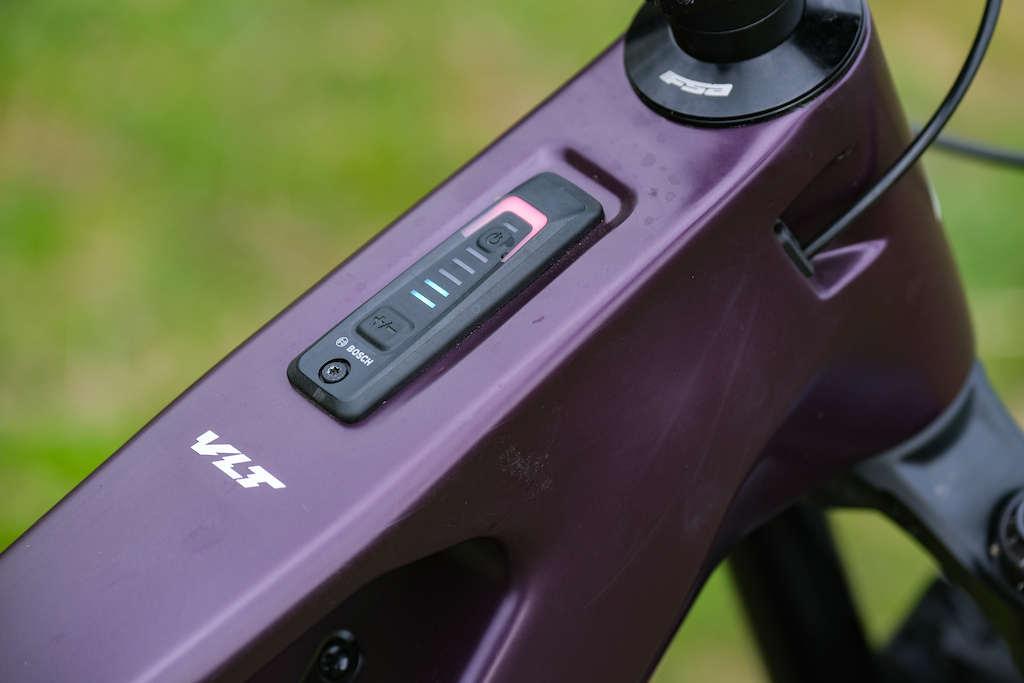
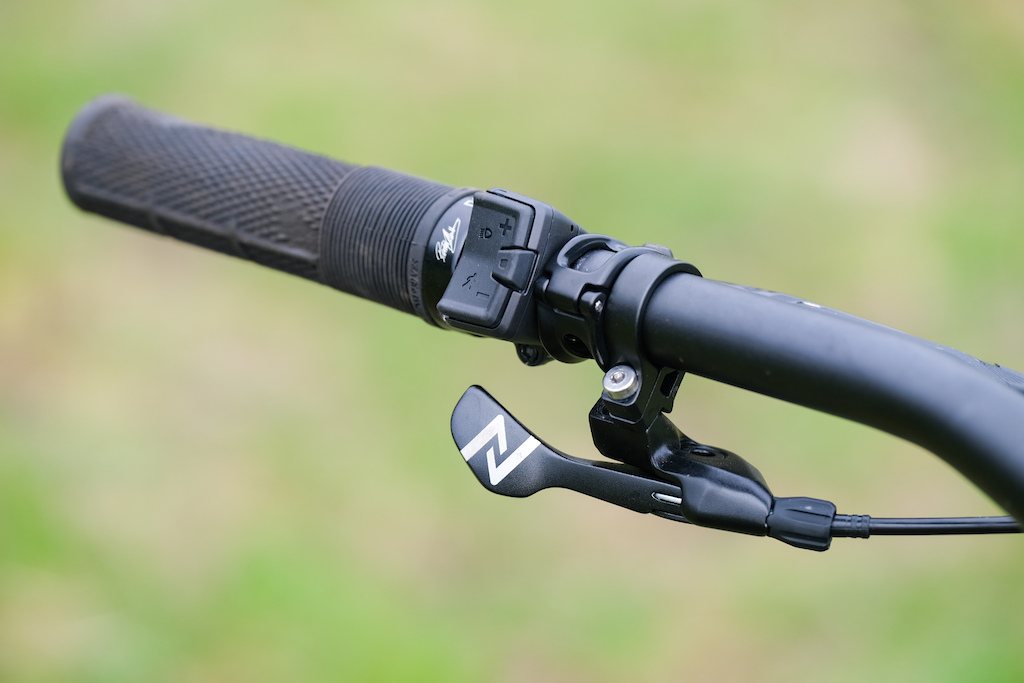
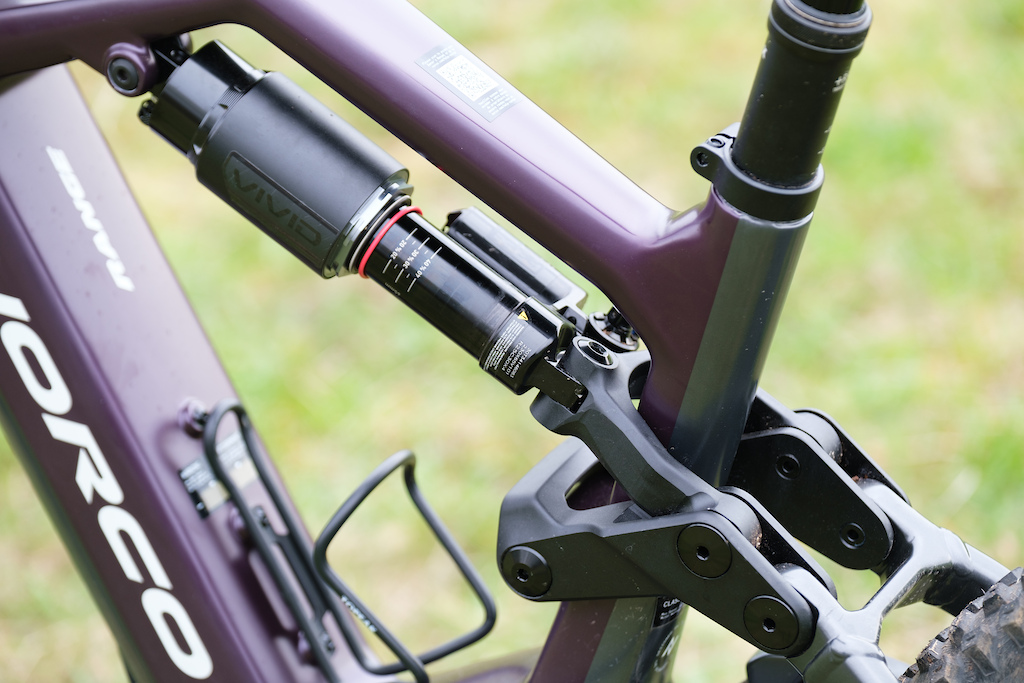
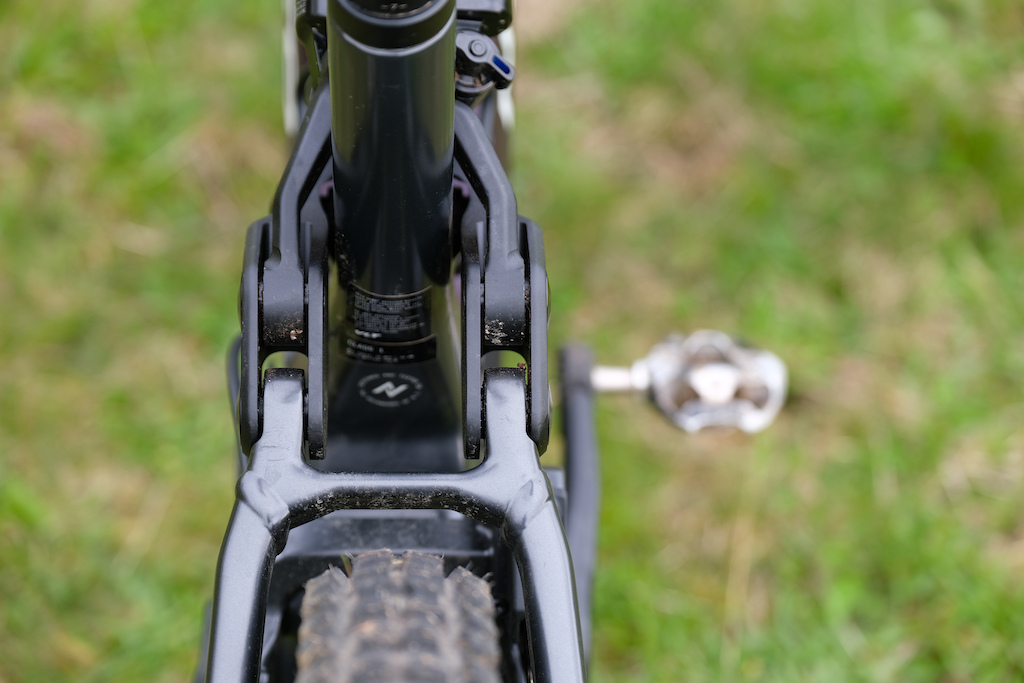
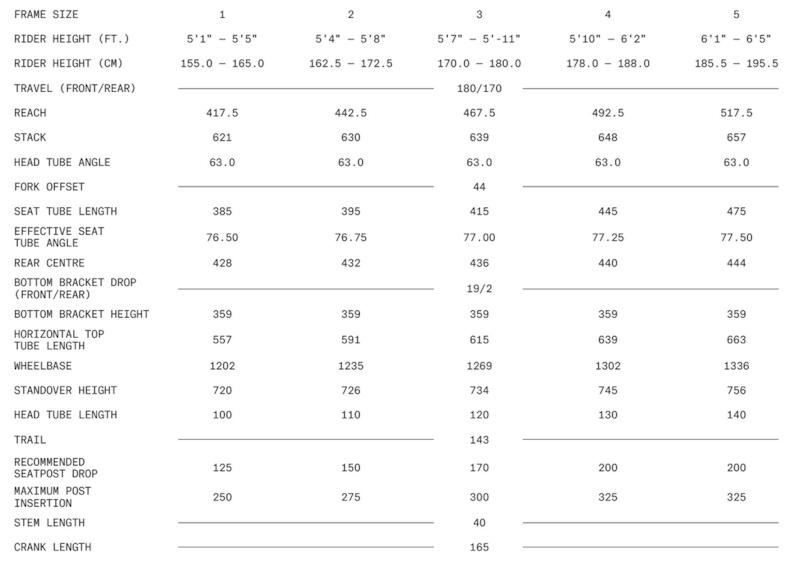
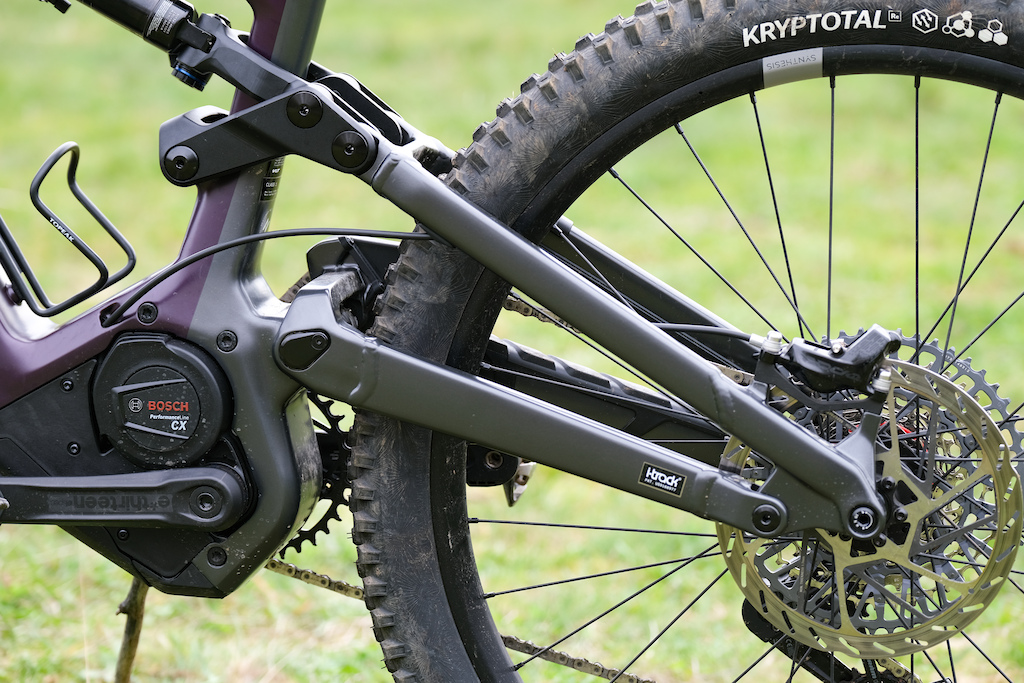
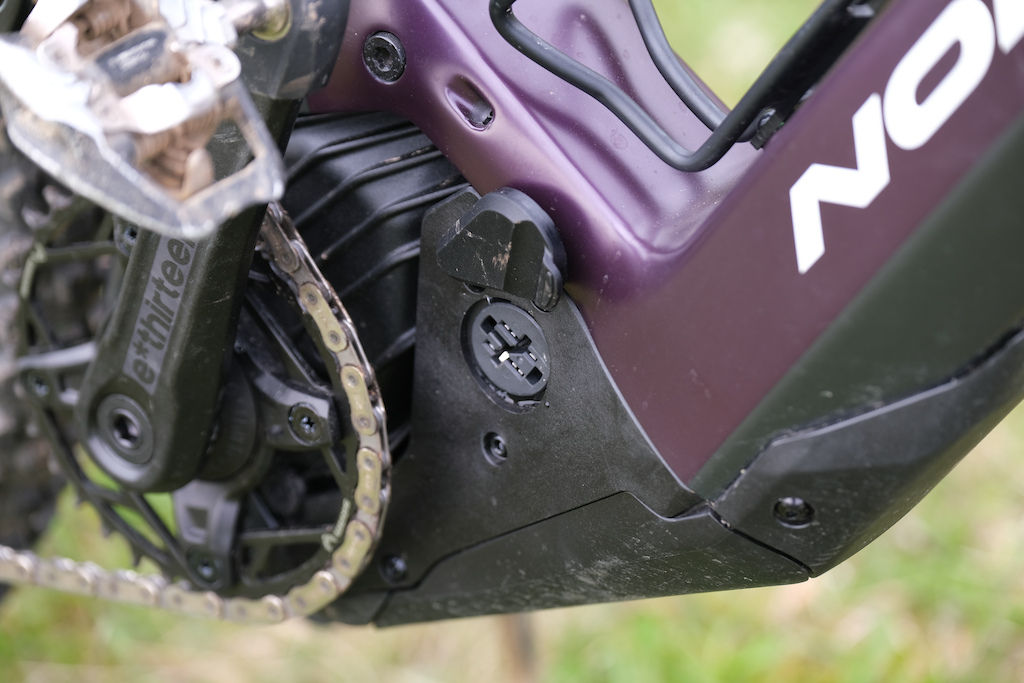
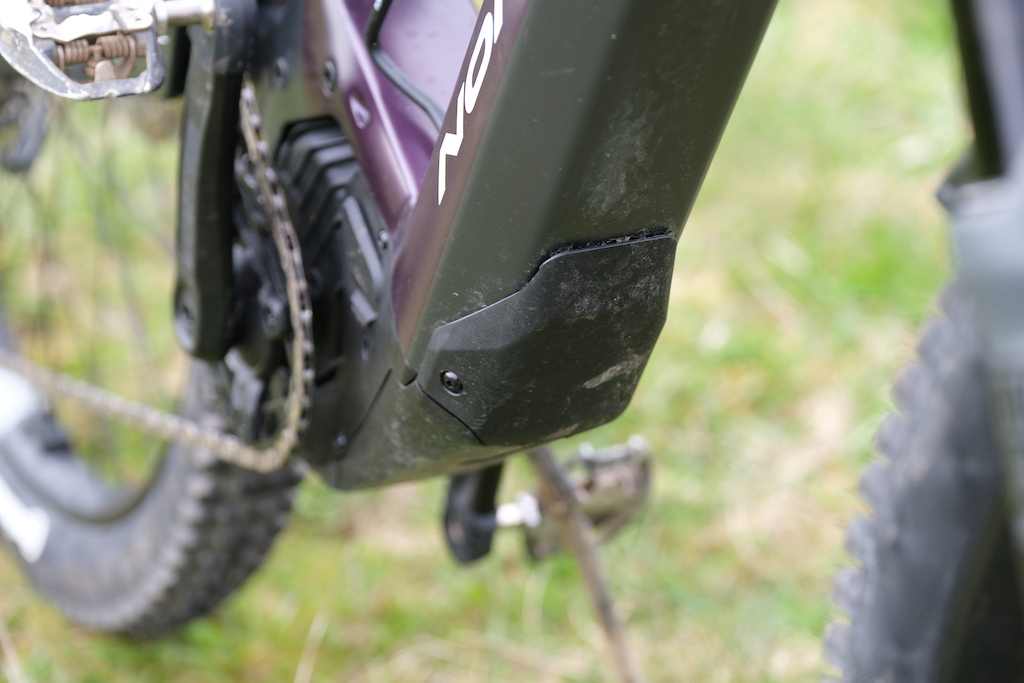




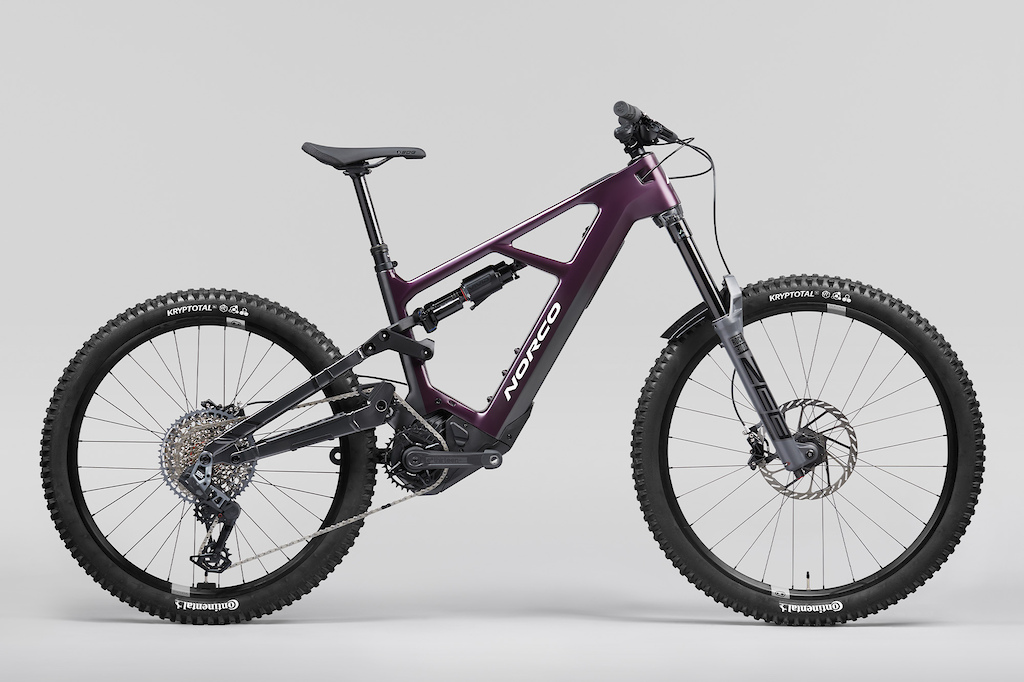
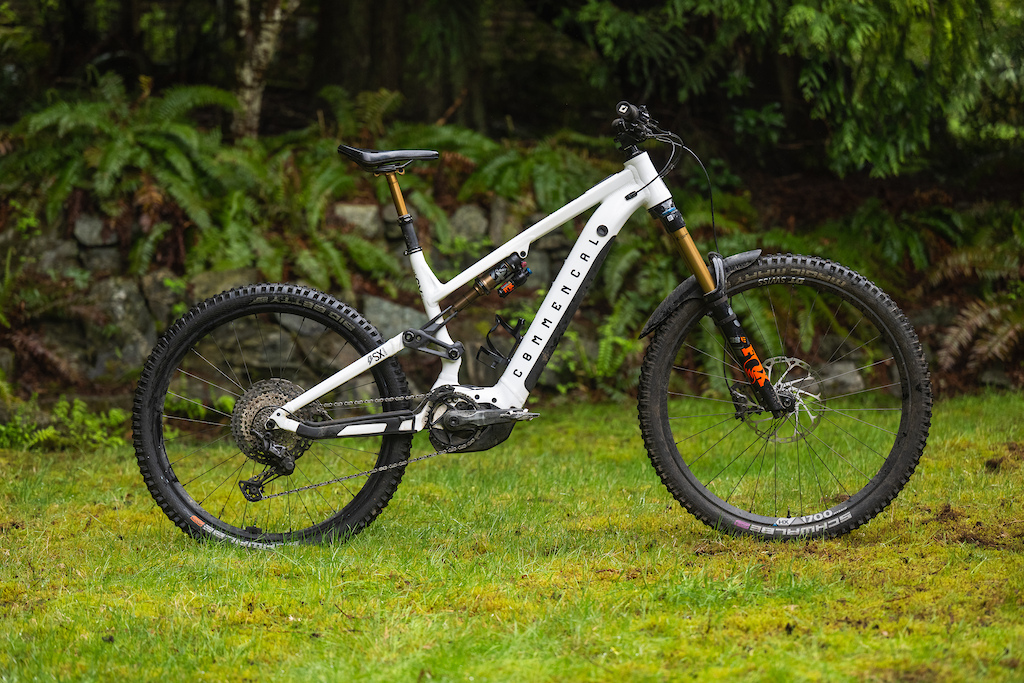





 Member since Feb 1, 2009
Member since Feb 1, 2009
In the real world, I've noticed I have slightly better range than my friends on S-Works Turbo Levos, so maybe there's something to it?
Trek Rail.....
practically nobody!
(i have both and People hating sram are the ones who cant set them correctly)
So sure compared to cardboard MT5's and SLX they are okish but even compared to old Saints they are horrid with their mushy feeling
Also "modulation" ? All that is is them using super cheap brake lines that expand during breaking. It's not more control but cost cutting on their part.
Also "no brake can overcome traction limits". Ah yes that's why the top pros are on Sram Levels... That's not really an argument. People want stronger brakes so that their arms hurt less. I see a lot of people comparing codes to enduro brakes or cheaper brakes here. So sure if you compare a code RSC to a brake that's 60% of the price it looks good but apples to apples. I see no reason to use sram even if yes we can cherry pick bad products from the competition Sram has always offered a consistently mediocre product. Never absolute shit but also never good. Never previous gen Saint, OG Gustavs in 2003, TRP with correct rotors. Last gen Hope V2 before going V4 (or Tech4 now), Hayes or that weird Shimano Magura combo people are doing.
Related note, I finally tried MTX pads in my Codes this year and they're incredible. Would definitely recommend to someone considering ditching Codes if power or squealing are on your list of complaints.
I had Codes on my Levo before and they were woefully underpowered, even with 220 HS2 rotors.
Ebikes are great training for the upper body, you should try it.
(and that was just because he thinks he knows better than the engineers and designers of this bike)
free advice: if it no longer your generation, let others do it!, in the second you compromised in the wrong way, because you chose a smaller bike that proved indeed to be to small, because of your conservative and fixed ideas, that second should come with the realisation that you should give up on testing and let other ppl, more grounded in current realities, more open to new things, do this job!, you are not fit for it anymore, from a mental POV!
I have a 50mm stem on Nomad 5 and it's fine. I've also tried it with 40 and 42.5, and have 32, and 35 on my other bikes. They all rode fine. 5-10 mm isn't going to make your suddenly make your bike useless.
I think the guy who literally gets paid to ride every bike out there over the last decade knows what kind of feeling/ set up he wants from a bike.
Also, most DH direct mount stems are 45-50mm...
I like the reach adjust built into the frame as a great starting point to close that gap between sizes. Then you can fine tune it from there.
as for what stem you have on your nomad, has zero relevance; important is what is the length of stem, the bike's designers decided it needs to have; you can put a 80mm stem if that's your think!, it will not mean the bike is at best with one; and also, there is a significant diff in how a bike rides, feels and behave with a 40mm stem vs a 50mm stem and vice-versa; don't pretend it isn't.
All of these just reconfirm you just can't teach new tricks to an old dog.
And as for feel, yes a 40 vs a 50 will feel different. But ultimately, by the end of the first lap, I (and most people) would have adapted, and it becomes just your bike again. If that seriously makes you not be able to ride suddenly, then you should work on your skill and adaptability, because after all, this is mountain biking. Where adaptability is one of the most important factors with being a well rounded rider.
Hilarious you are calling someone who has ridden more bikes than 99% of the population as his job that he can't learn new tricks. It sounds like you are the one who can't learn new tricks, or what you actual prefer feel wise.
Shimano 504w = 2.6kg
Bosch 750w=4.9kg
I would prefer the smaller battery and a range extender over the bigger battery. But I’ve never ridden a lighter ebike, so don’t know if 5 lbs feels that different with a motor.
But basically all it gets you on an ebike is just smoother square edge hits, right? And arguably less smooth than a bike with linkage-induced rearward axel path, no? I'm much more a believer on analog bikes where the pedal feedback might actually be relevant. But even then, I've never once been riding and thought "damn, got a ton of kickback in the cranks on that one"
Rear Centre Length s1/ 428 s2/ 432 s3 /436 s4/ 440 s5/ 444
*opens Excel*
Be back shortly.
While 4mm per size isn't a lot, I would argue that it's better than one size fits all especially since the difference between the shortest and the longest is almost 20mm.
How come it looks nothing like the Range though?
Which, I sooo wish they allowed comments on.
I don’t care about e-bike feelings but quit helping them classify this as a bicycle.